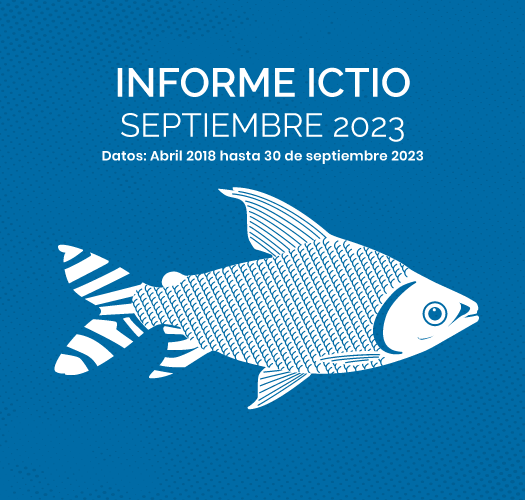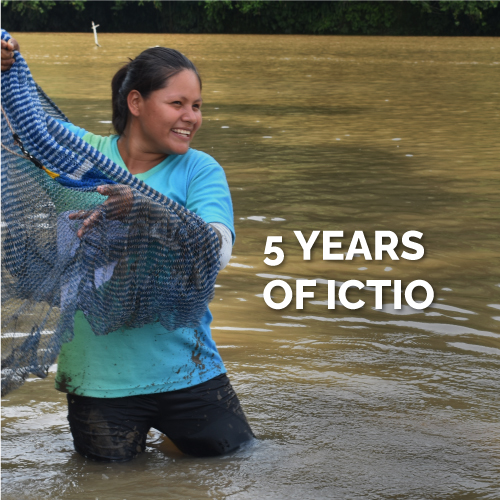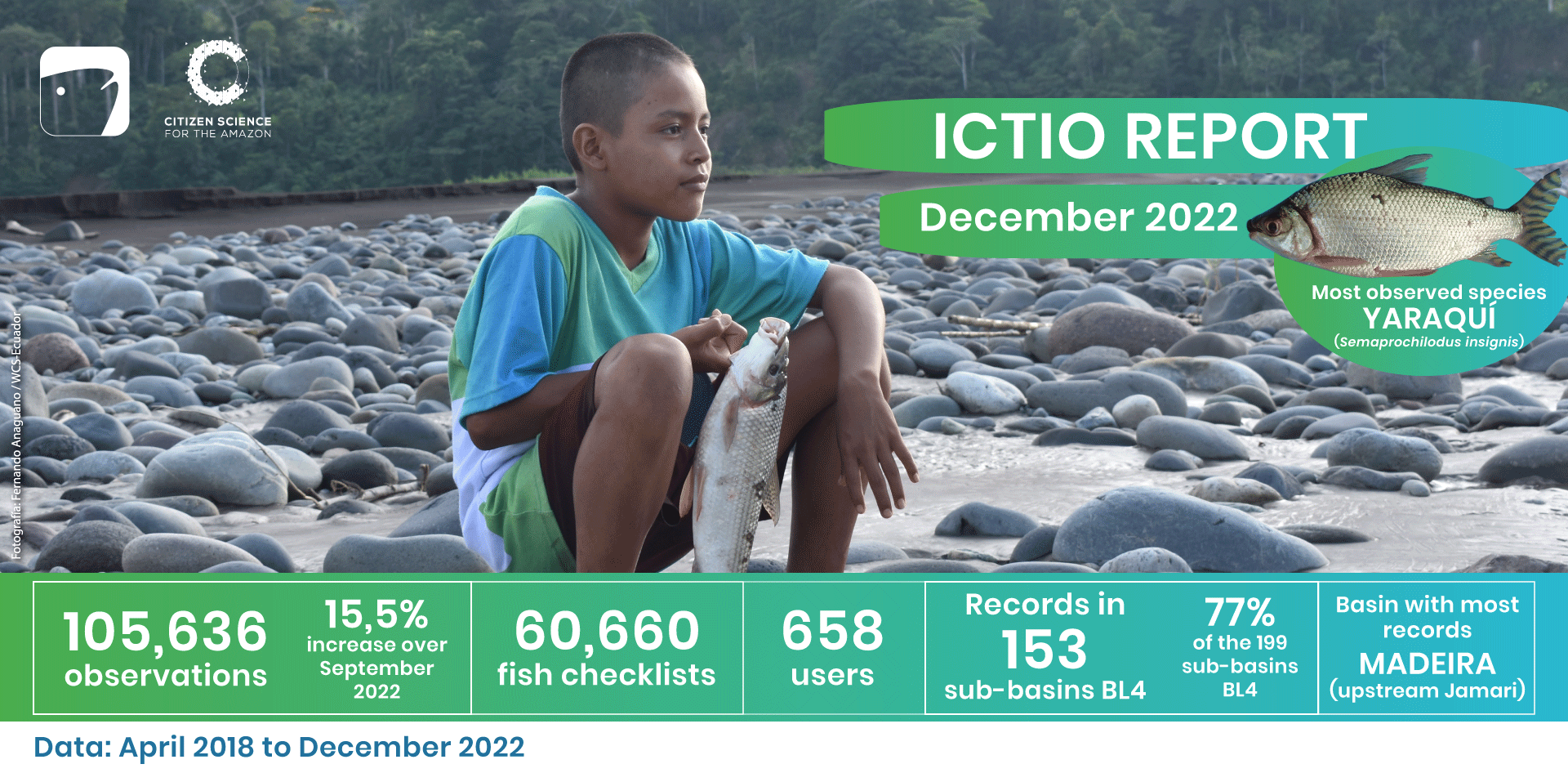
In December 2022, about to turn five years old, the Ictio platform database exceeded 105,000 observations!
Launched in April 2018, the Ictio platform (which brings together records made through the Ictio app and web page for uploading data) had an increase of over 15% in observations in December 2022 records compared to September 2022, reaching 105,636 Amazonian fish observations (Figure 1).

Figure 1 – Total observations records, lists and users of Ictio platform between April 2018 and December 2022, and respective increases from the previous quarter (September 2022). Data accessed on 1 January 2023. Source: ictio.org. Elaboration: Wildlife Conservation Society.
Between October and December 2022, three new sub-basins contributed with records to the Ictio platform. Currently Ictio gathers records distributed along 153 (77%) of the 199 Amazonian level 4 (BL4) sub-basins (learn more about the Geographic Information System (Framework GIS) on rivers and basins for the conservation of aquatic ecosystems in the Amazon, by Venticinque et al., 2016. (Figures 2 and 3). This geographic scope reveals the potential of Ictio to contribute to the understanding about fisheries at the Amazon scale, and to decision-making about fisheries management and connectivity of Amazonian rivers. The article “El potencial de la ciencia ciudadana para identificar patrones de migración de peces amazónicos“, by Dr. Carolina Doria (UNIR), member of the Citizen Science Amazon Network, highlights that the strength of Ictio is to create the opportunity to share knowledge among researchers and citizen scientists across the basin.
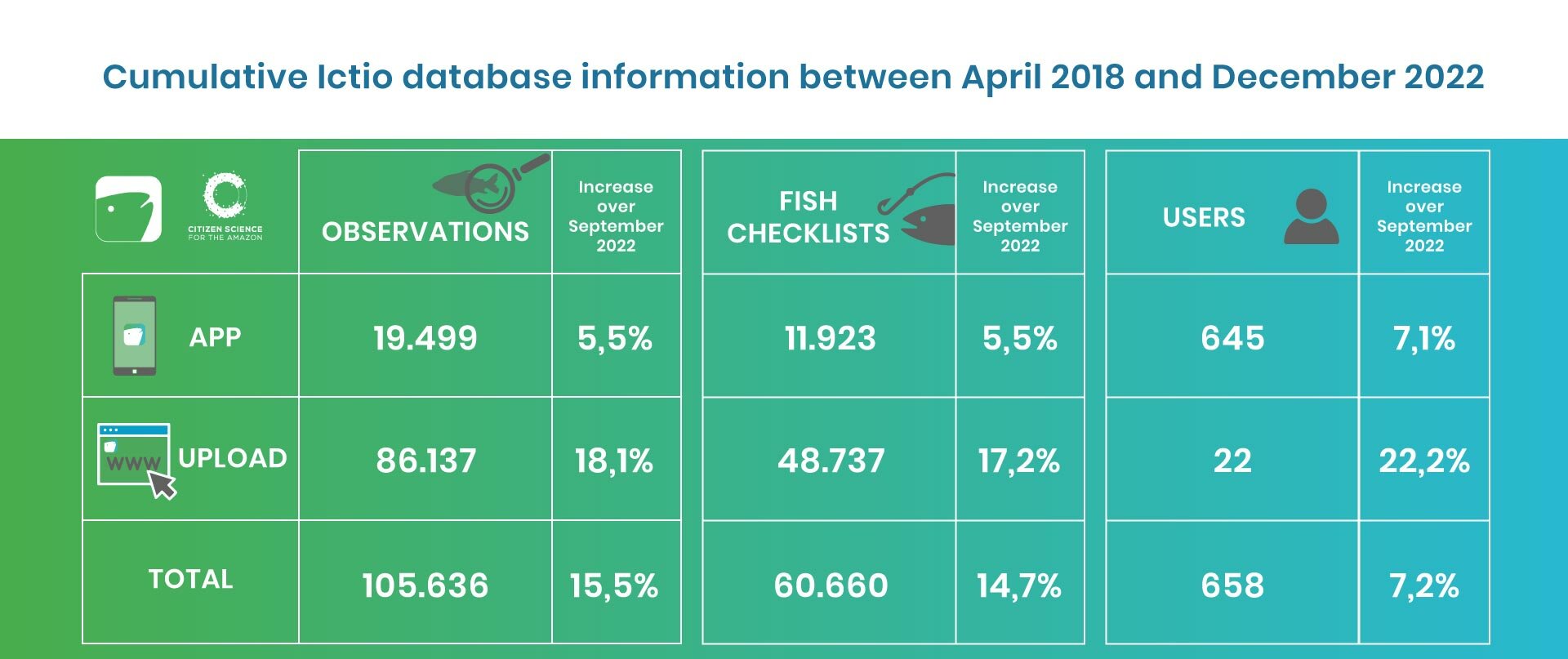
Figure 2 – As of December 2022, Ictio has 105,636 fish observations in 60,660 lists (fishing events). This information was generated in 153 (77%) of the 199 level 4 sub-basins of the Amazon, whichis the result of the work of 658 individuals and organizations. Observations were recorded in Ictio between April 2018 and December 2022, and consulted on January 1, 2023. Source: Ictio.org Elaboration: Wildlife Conservation Society.

Figure 3 – Increment (%) of fish checklists generated in 153 of the 199 level 4 sub-basins of the Amazon, with respect to the accumulation of data through the previous quarter (September 2022). Fish checklists were registered in Ictio between April 2018 and December 2022, and consulted on January 1, 2023. Source: Ictio.org Prepared by: Wildlife Conservation Society.
Species and Basins of Interest
The most commonly recorded fish species in Ictio is the jaraqui (Semaprochilodus insignis), with 8,564 observations; followed by Fish sp (category to record fish that are not on the list of priority species of the Ictio platform), with 6,930 records; and the tambaqui (Colossoma macropomum), with 6,648 records (learn about the 10+ fish recorded in figure 4).
The Madeira sub-basin (above the Jamari), a region near the Brazil-Bolivia border, has 16,282 observations and is the region with the most records,followed by the Amazonas/Solimões (between Juruá and Negro) sub-basin, with 14,819 observations; and the Amazonas (above Jandiatuba) sub-basin, with 8,481 observations.

Figure 4 – Top ten species (or groups of species) most recorded in Ictio correspond to 47% of total observations. For common names, see https://ictio.org/species. Observations were recorded in Ictio between April 2018 and December 2022, and consulted on January 1st 2023. Source: Ictio.org Prepared by: Wildlife Conservation Society.
We highlight a beautiful photo of a dorado catfish (Brachyplatystoma rosseauxii) (Figure 5) caught in the Tambopata sub-basin, Madre de Dios region (Peru). The dorado makes the longest migrations in the Amazon, traveling more than 11,000 km. It is born in the Andean piedmont, and then returns to that reproduction area after spending part of their lives in the estuaries, the mouth of the Amazon (Barthem et al., 2017). In Ictio, the dorado were recorded in 3446 lists in 40 BL4 sub-basins (Figure 6).
The Ictio app photo library has already entered more than 7,000 fish records throughout the Amazon. The photos reveal the Amazon basin fish diversity. Those photos are key to supporting the species records review as well as to guide future updates of the list of priority species of the platform.

Figure 5 – Dorado in the Tambopata sub-basin, Peru. Credit: Anonymous user/Macaulay Library at the Cornell Lab (ML491637631).
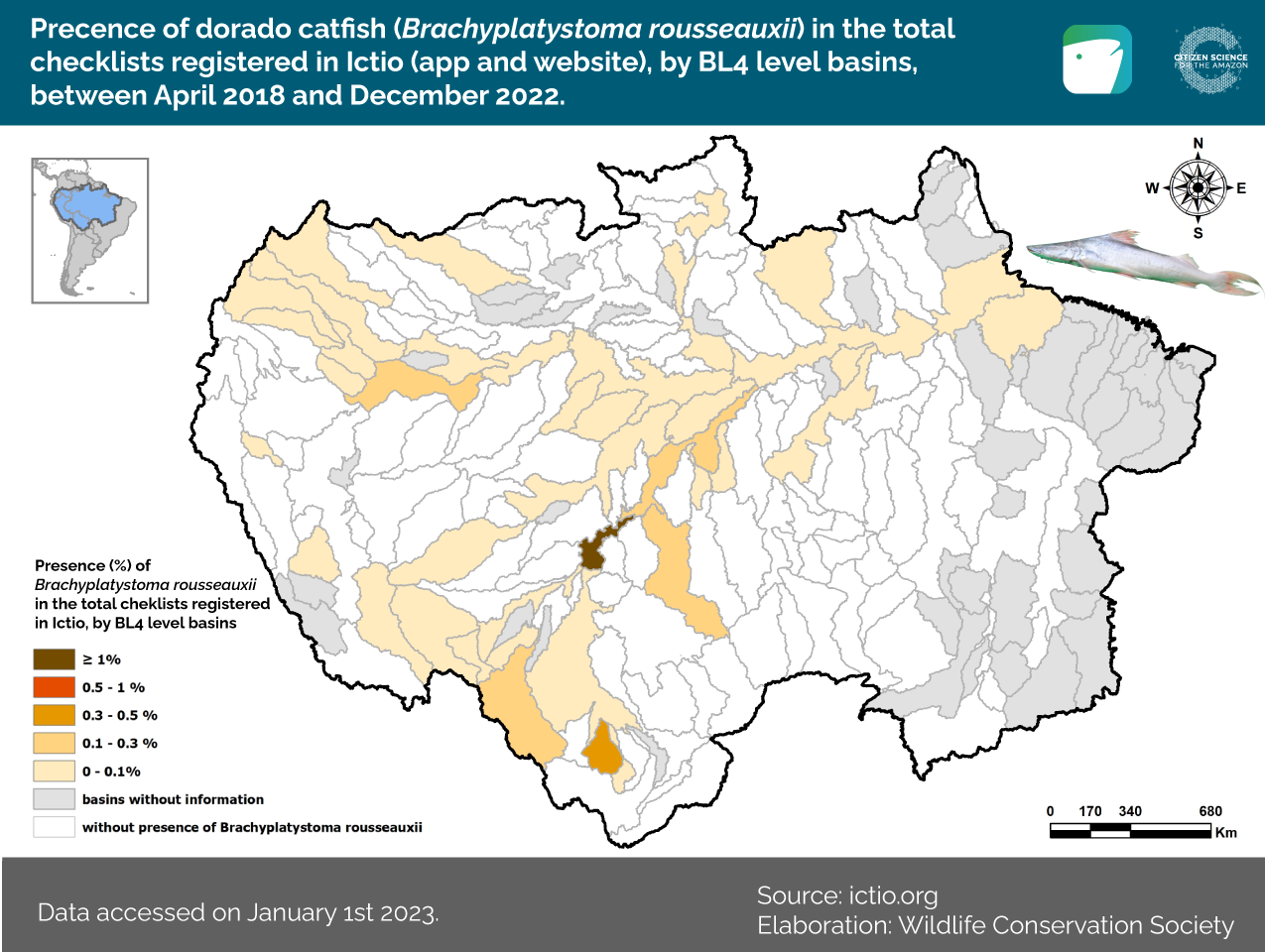
Figure 6 – Percentage of dorado catfish (Brachyplatystoma rousseauxii) occurrences recorded in the lists submitted to the Ictio base, by BL4 basin. Fish lists were registered in Ictio between April 2018 to December 2022, and consulted on January 1st 2023. Source: Ictio.org Prepared by: Wildlife Conservation Society.
Another prominent Amazonian fish is the bocachico (Prochilodus nigricans), a mid-distance migrant of great commercial importance. Also, bocachico stands out as the species most recorded by the app. In Ictio, the bocachico was recorded in 6097 lists in 93 BL4 sub-basins (Figure 7).
Figure 7 – Percentage of bocachico (Prochilodus nigricans) occurrence in the lists submitted to the Ictio base between April 2018 to December 2022, and consulted on January 1, 2023, by BL4 basin. Source: Ictio.org Prepared by: Wildlife Conservation Society.
Active community
These results are possible thanks to the collaboration of an active community of fishermen/citizen scientists and institutions. Ictio currently has 658 users from Bolivia, Brazil, Colombia, Ecuador and Peru. Of these, 645 users use the app to share fishing events or markets’ observations. Another 22 users use the upload platform to share monitoring and research data. The most active app user has shared 746 fish observations, in the region of Loreto, Peru. The most active upload platform user has shared more than 18,000 fish observations from the Amazonas/Solimões region in Brazil.
In this quarter, we highlight the contribution of the Citizen Science project ‘De olho no peixe Matrinxã‘, led by Liliane Matos. The Project contributed, via upload platform, with more than 12,000 records from the Tapajós/Teles Pires region, Brazil, a result of the partnership between UFMT researchers and fishers from the Fishing Colony Z-16, from the Sinop region.
Access other data visualization products such as observations distribution maps per app and upload and graph with the basins with the highest number of observations through the link below.


